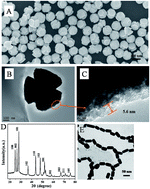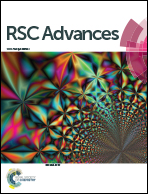Efficient electrochemiluminescence quenching of carbon-coated petalous CdS nanoparticles for an ultrasensitive tumor marker assay through coreactant consumption by G-quadruplex-hemin decorated Au nanorods
Abstract
A novel competitive electrochemiluminescence (ECL) aptasensor was designed for the detection of carcinoembryonic antigen (CEA) using carbon-coated petalous CdS nanopaticles (CdS–C petalous nanoparticles) as an ECL emitter and DNAzyme/Au nanorods–complementary DNA as a quenching probe. The quenching probe was firstly prepared by assembling guanine (G)-rich ssDNA and cDNA on Au nanorods and then reacting with hemin to form hemin/G-quadruplex DNAzyme units. CdS–C nanoparticles were synthesized and employed as the matrix for the construction of the CdS–C/Chit/aptamer platform. In the absence of CEA, the DNAzyme/Au nanorods as the quenching probe can be introduced by hybridization with aptamer on the surface of the sensing platform. In this state, DNAzyme immobilized on the probe catalyzes the reduction of H2O2, producing a decreased ECL emission. Upon both CEA and quenching probe addition, competitive reaction of the quenching probe and CEA with capture aptamer immobilized on the electrode occurred and thus resulted in the decreased amount of quenching probe on the electrode, which decreased the consumption of H2O2, producing an increased ECL signal. Based on this strategy, the aptasensor enables the sensitive detection of CEA in a range of 0.1 pg mL−1 to 0.5 ng mL−1 with a detection limit of 0.036 pg mL−1. The limit of quantification in human serum samples was experimentally found to be 0.21 pg mL−1. Moreover, the application of the aptasensor was demonstrated in the analysis of CEA in human serum samples with recoveries of 88.2–106%. The proposed method holds great promise in the highly sensitive and selective detection of CEA in biological samples.


 Please wait while we load your content...
Please wait while we load your content...